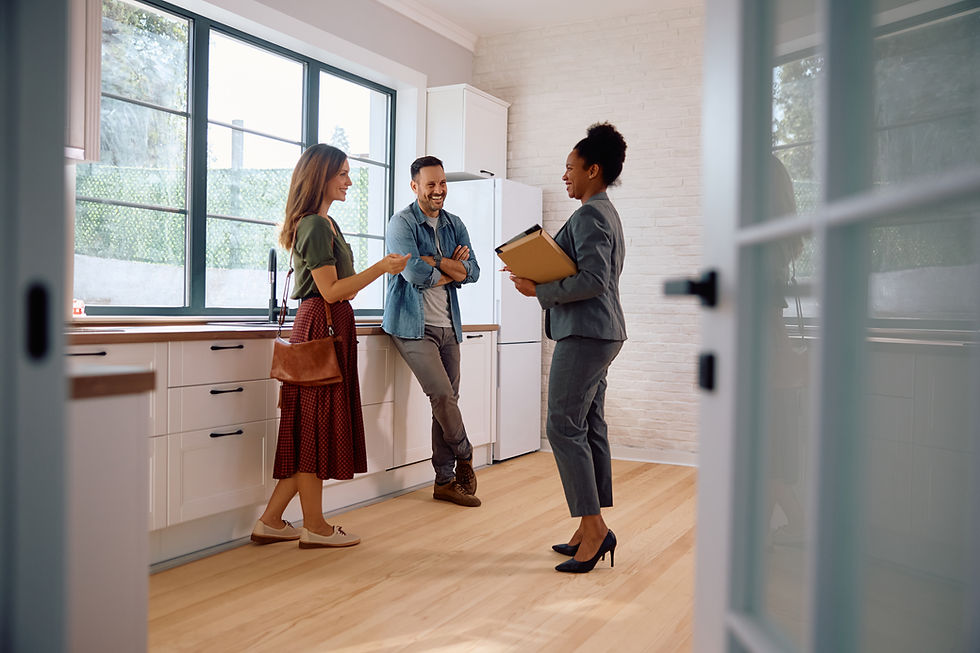Is Sustainable Building the Future of Urban Real Estate? Exploring the Unknown Possibilities
- tylergkoski
- Mar 12
- 4 min read
Updated: Mar 31
As urban populations soar, the demand for innovative solutions in real estate becomes urgent. More developers are now focusing on sustainable building. These eco-friendly structures not only aim to benefit the planet but also deliver numerous advantages for city living.
In this blog post, we will explore the exciting possibilities for sustainable building in urban real estate. We will see how these green initiatives can change the landscape of our cities.
The Growing Importance of Sustainable Building in Cities
Sustainability is not just a trend; it has become a key requirement for urban development. Climate change poses serious threats, with cities grappling with challenges like increased flooding and rising temperatures. For instance, a report from the Federal Emergency Management Agency indicates that flooding costs U.S. cities an estimated $7 billion annually.
Sustainable buildings, featuring energy efficiency, waste reduction, and eco-friendly materials, directly address these issues. They also cater to a growing number of homeowners and tenants who prefer eco-conscious living. A survey by the National Association of Realtors shows that 68% of homebuyers are willing to pay more for a home with energy-efficient features.
The Rise of Green Construction Materials
A significant shift in urban real estate is the increased use of sustainable materials. Traditional building materials like concrete and steel contribute heavily to carbon emissions. In contrast, alternatives such as bamboo, recycled steel, and even mycelium-based products are gaining popularity.
For example, bamboo grows rapidly, making it a highly renewable resource. Buildings using bamboo can have up to 30% lower energy costs compared to those built with conventional materials. Additionally, materials like recycled steel can reduce energy consumption in production by as much as 50%.

• Smart Technology and Energy Efficiency in Sustainable Building
The integration of smart technology in sustainable buildings is a promising trend. Smart homes employ automated systems to enhance energy use efficiency, making them cost-effective for residents.
Imagine a building where the heating and cooling systems adapt to the weather, and energy use is monitored in real-time. These smart technologies are not just convenient; they are essential for reducing our carbon footprint. According to a McKinsey report, smart technologies can reduce building energy consumption by up to 20%.
Urban Farming: A New Frontier
With cities growing more crowded, incorporating urban farming into building designs is gaining traction. Rooftop gardens and vertical farms could transform how cities produce food and manage waste.
These setups provide fresh produce directly in urban settings and improve air quality. A study from the University of California found that urban farms can reduce local temperatures by 2 degrees Fahrenheit, contributing to urban biodiversity and enhanced community involvement. The rise of community-supported agriculture (CSA) is creating opportunities for buildings to foster sustainable practices among neighbors.
The Role of Government and Policy
Government policy is crucial in shaping sustainable building's future. Incentives like tax breaks, grants, and reduced permit fees for green projects encourage developers to prioritize sustainability.
Cities implementing stricter building codes that require sustainable practices lead the way. For instance, San Francisco's green building ordinance has increased green building certification for new constructions by 65% over the past decade.
Community Engagement and Participation
Community involvement is vital for the future of urban real estate. Sustainable buildings are about more than just architecture; they enhance residents' lives.
Engaging local communities in the planning phases creates a sense of ownership and responsibility. Involving residents in discussions about their spaces leads to more effective, accepted sustainability strategies. For example, projects in Portland, Oregon have shown that community-driven planning can increase local support for green initiatives by nearly 40%.
Financial Incentives for Sustainable Development
While the initial costs of sustainable building may be higher, the long-term financial returns are significant. Reduced energy bills, rising property values, and potential tax incentives make these eco-friendly buildings attractive to investors and homeowners.
In fact, properties certified with sustainable building standards appreciate 10% more in value compared to traditional buildings. As sustainability becomes mainstream, these properties are poised to continue appreciating faster.
The Future Cityscape
Imagining cities of tomorrow leads us to visions of lush greenery, smart technology, and cohesive living. Picture urban areas where buildings blend with nature, solar panels line rooftops, and electric vehicle charging stations are commonplace.
As more developers adopt sustainable architecture, city skylines will transform, showcasing designs that reflect our commitment to a greener future.

Final Thoughts
The future of urban real estate strongly points toward sustainable building practices. As society shifts toward eco-conscious living, investing in sustainable development becomes essential—not just for the environment but also for enhancing quality of life in urban areas. The rise of sustainable building is not only reshaping city skylines—it’s redefining how we think about resilience, affordability, and long-term urban impact.
While challenges exist, sustainable architecture presents a hopeful path for adapting to urbanization trends without compromising our planet. The more we learn about sustainable practices, the clearer it becomes: green buildings are not merely a trend; they are a necessity for thriving urban environments.
Ultimately, the real question is not whether sustainable building is the future of urban real estate; it is how swiftly we can embrace it. Together, we can explore new possibilities, challenge limits, and create livable cities for generations to come.




Comments